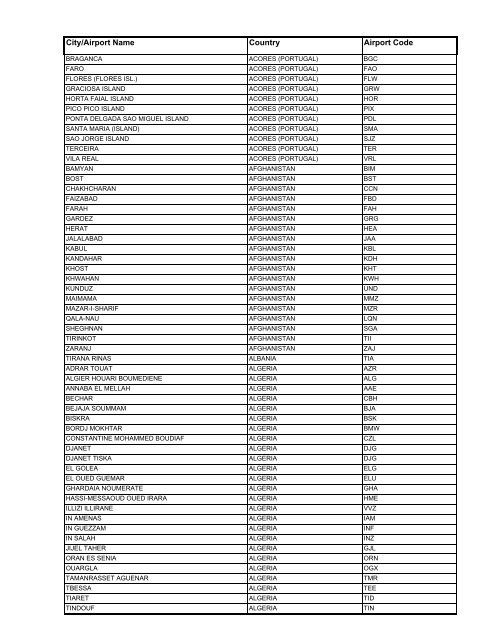

This led to a national debate on whether to keep the present location or to build a new airport the last option was chosen. The airport is now surrounded by urban development, being one of the few airports in Europe located inside a major city. With this concession, ANA became responsible for the planning, development and construction of future infrastructure. Īlong with the airports in Porto, Faro, Ponta Delgada, Santa Maria, Horta, Flores, Madeira, and Porto Santo, the airport's concessions to provide support to civil aviation were conceded to ANA Aeroportos de Portugal on 18 December 1998, under provisions of decree 404/98.
#Airport city codes study upgrade
A major upgrade to the buildings and facilities commenced in 1983, and the first air bridges were added in 1991. When TAP ordered the 747 in 1972, five large parking bays were built, and the terminal was enlarged. The first direct flight to New York was operated by TWA with a Boeing 707, who later operated the first Boeing 747 service in 1970. It was 3,130 m (10,269 ft) long and would allow direct transatlantic flights. The first jet aircraft flight was an Air France Caravelle in 1960. Major upgrades from 1959 to 1962 included a new runway capable of handling the first generation of jets, such as the Boeing 707 and Douglas DC-8. Runways 5 and 36 were each later extended northward to a length of 1,999 m (6,558 ft). By 1954 the number of passengers reached 100,000.

Īt the end of the war the airport developed rapidly, and by 1946 was used by major airlines such as Air France, British European Airways, Iberia, KLM, Sabena, Pan Am and Trans World Airlines. Although Portugal was neutral, the airport was used by allied flights en route to Gibraltar, North Africa and Cairo. As such, it was heavily monitored by both Axis and Allied spies. It is widely referenced in the classic film Casablanca, whose plot revolves around an escape attempt to Lisbon airport. As a neutral airport it was open to both German and British airlines, and was a hub for smuggling people into, out of, and across Europe. The airport opened on 15 October 1942, during World War II, and initially operated in conjunction with the Cabo Ruivo Seaplane Base: seaplanes performed transatlantic flights, and passengers were transferred onto continental flights operating from the new airport. History Early years Lisbon Airport in 1951 Terminal 1 check-in hall Terminal 2 check-in area Terminal 1 arrivals area These plans have for decades been postponed or suspended for a myriad of reasons. It is one of the most congested airports of Europe and one of the only major airports to have an approach path directly over the city, notwithstanding plans to build a new airport elsewhere. Lisbon Airport has consistently ranked dismally in customer satisfaction, with AirHelp polling it in last place amongst 132 airports in the world as of 2022. The airport is run by ANA Aeroportos de Portugal, which was concessioned to the French group Vinci SA in February 2013. It is a focus city for Azores Airlines, euroAtlantic Airways, Hi Fly and White Airways. The airport is the main hub of Portugal's flag carrier TAP Air Portugal, including its subsidiary TAP Express, as well as being a hub for low-cost airlines Ryanair and easyJet. It is an important European hub to Brazil, the largest European Star Alliance hub to South America and also a European hub to Africa.

As of 2022, it was the 14th-largest airport in Europe in terms of passenger volume, and carried 190,700 tonnes of cargo. The airport is the main international gateway to Portugal. Humberto Delgado Airport ( IATA: LIS, ICAO: LPPT), informally Lisbon Airport and previously Portela Airport, is an international airport located seven kilometres (four nautical miles) northeast of the city centre of Lisbon, the capital of Portugal. Source: ANAC, , ANA Aeroportos de Portugal Publication


 0 kommentar(er)
0 kommentar(er)
